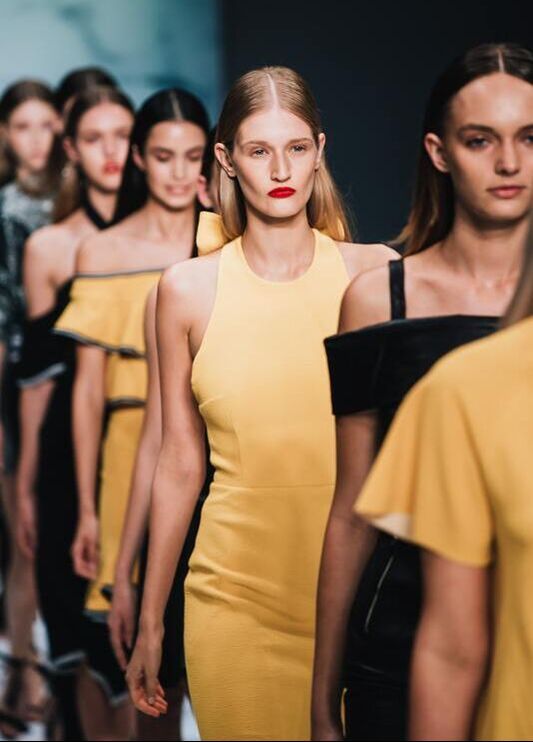|
With shows available digitally to all and editors superseded by social media influencers, where does the traditional fashion critic fit into fashion’s new landscape? Last autumn, just as the latest round of digital fashion shows was parading past our screens, a post popped up on my Twitter timeline from a well-known magazine editor. The post, a screenshot of her own timeline, displayed two Tweets: both from popular online fashion commentators who worked for her title and passing judgment on the latest collection from a Parisian fashion house in the kind of hyperbolic terms that grab attention on social media. One praised the collection as the best thing since sliced bread while the other declared it the worst show he had seen in decades. (The collection, in my humble opinion, was fine. The clothes were pretty and will sell well commercially but no-one will be talking about them in seasons to come.) The editor, for her part, captioned her tweet ‘Dream Team’ – and she is, of course, right. Fashion discourse should represent opposing opinions and interpretations. But it’s also likely she felt compelled to post at all because the fact that these two commentators should have such opposing views had caused quite a stir among High Fashion Twitter, which had begun pitting the two against each other despite their protestations of mutual respect. The exchange raised interesting questions about the nature of modern fashion criticism and the way the democratisation of access to shows and designers – as well as the influence of social media – has changed the way we discuss new collections. That two well-respected figures should have such differing opinions was scandalous because, as with most things that happen online, there is only one right opinion. A collection is good or bad, pretty or ugly, exciting or dull – there is no room for nuance or grey areas when commentary must be squeezed into 280 characters.
The watershed moment for this was, perhaps, the backlash against Hedi Slimane’s debut collection for Celine in 2018. While distaste for the collection was not unwarranted, the negative reviews became so overwhelming that Fashionista was even driven to round them up in a piece entitled The Most Savage Reviews of Hedi Slimane’s Celine Debut – leaving a strong sense that, really, there was no room for an opposing opinion on this matter. Typically on social media this played out with those willing to stick their heads above the parapet to point out that while, no the clothes weren’t very Celine, they were very Hedi Slimane and, after his time as Saint Laurent, what had everyone expected, were roundly lambasted as ill informed and, in some cases, anti-feminist. Interestingly this reaction didn’t stop LVMH predicting double digit growth for the brand (pre-pandemic) suggesting, as far as the conglomerate was concerned, Slimane had done exactly what he was hired to do. So what was different about the criticism of this show? For many, the new direction Slimane took at Celine represented a troubling viewpoint that extended far beyond fashion to gender, female representation and the very notion of what is ‘desirable’ – a feeling exacerbated by the fact the show was presented while the Brett Kavanaugh sexual assault hearings were making headlines. Whereas, under Phoebe Philo, Celine had embraced an aesthetic that flattered women of all sizes and spoke of a practical, intellectual approach to luxury, Slimane’s short, sparkly party dresses and dangerously thin models suggested, as Lisa Armstrong wrote in the Telegraph, that “the female view appears to have fallen out of fashion.” Negative commentary from professional critics, such as Armstrong, Givhan and the New York Times’ Vanessa Friedman, is not uncommon, of course. In fact, Cathy Horyn made her name by being the critic willing to say what many were thinking (and found herself banned from more than a few front rows as a result). The list of these truly impartial writers is vanishingly short, however, (even shorter now, thanks to the dismissal of industry veteran Bridget Foley from WWD, which was announced this week) and these writers are often subject to strict rules around brand gifting and consultancy work which allows them to retain their journalistic integrity. What was notable in the case of Slimane’s debut collection for Celine, however, was the lack of praise from the mainstream glossies usually quick to heap adoration on a new collection in the hopes of chasing increasingly scarce advertising dollars. While their reviews were by no means as biting as those of the critics above, Nikki Ogunnaike did go as far as to deem the collection “disappointing, if not surprising” in her review for elle.com – which is about as damning as it gets for a publication that counts LVMH as one of its biggest clients. And, when even those who can usually be counted on for glowing praise regardless of aesthetic reality turn their backs on a collection, it can be hard not to accept this as the ‘right’ opinion. *** Since 2018, the need for those with a large online presence to retain their digital cache by swiftly passing a thumbs up or down judgement on a show within minutes of its presentation has become even greater. It is human nature to subsume the opinions of those we regard as being more knowledgeable than ourselves (however self-appointed they may be) and, once a few outsize voices (whose #sponcon ties to a brand may inform a large part of their opinion) are in agreement, any who dissent will largely find themselves deemed to be wrong, misled or not sophisticated enough to understand the ‘correct’ view. This, according to Friedman, completely misses the point of criticism. “I think a critic’s role has always been to act as [an] interpreter between designer and consumer," she told Digiday. “That means you bring to it a certain amount of historical and contemporary context. You provide the framework for how people think about clothes.” The aim of the critic then, is not to offer judgement in its purest form, but to provide a reader with the information they need to form their own educated opinion. Of course, should you be willing to wait for Friedman and her colleagues to fill their deadlines before forming your view, the conversation online will undoubtedly have already moved on. Fashion, of course, is not the only area of discourse subject to such binary conversation online. It could, in fact be argued that fashion commentary is merely following in the footsteps of modern political, economic and pop culture conversation. In a world where the feed rules all, no industry is immune to snap judgements and cancel culture. As ever there is also a measure of personal accountability to be taken in all this - especially as social media is only likely to increase its dominance of the fashion industry. No matter how influential a person may be online or how knowledgable they represent themselves, the knee jerk reaction of a social media commentator is no more valid than the carefully considered critique of a trained fashion critic because it is delivered to us faster. It is up to us as readers to seek out different voices and consider different angles while remembering that, despite the pressure many in the fashion industry feel to build a ‘personal brand’, there is no obligation to publish your opinion online. Coming to your own conclusions, even if they dissent from the masses, is healthy – and you can’t build a well-rounded worldview on retweets alone. Comments are closed.
|
Categories |
Search by typing & pressing enter





